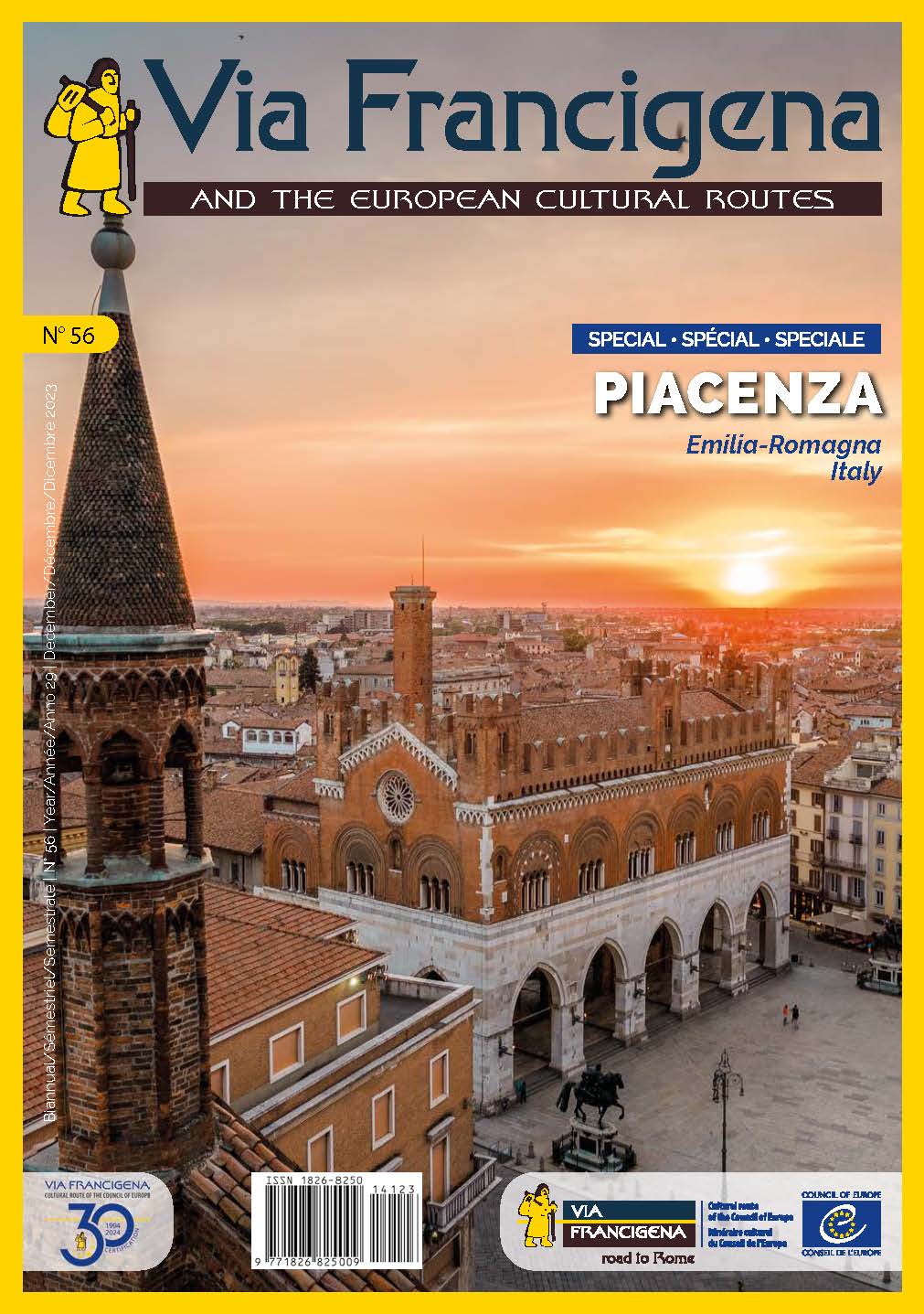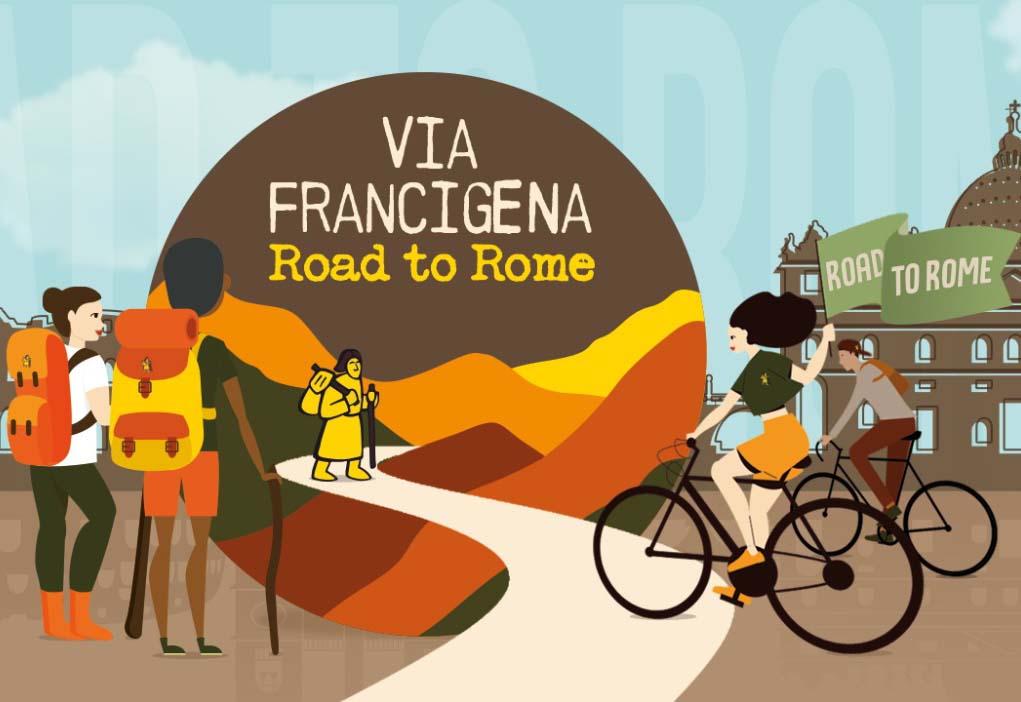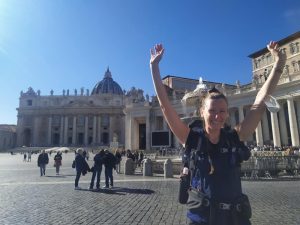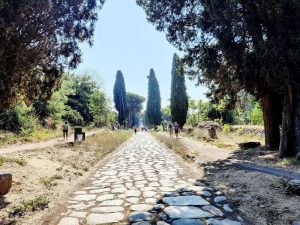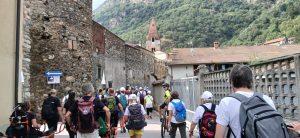Since 1994, according to a regional law, the Sacra di San Michele has been the ‘symbolic monument of Piedmont for its centuries-old history, for its testimony of spirituality, daring, art, and culture, and for its admirable synthesis of the most peculiar characteristics that Piedmont has to offer, as well as for its exceptional location and visibility‘. The perfect description of this unique monument which, for more than a thousand years, has dominated the stretch along the Monginevro state road, in the Susa Valley, on the Via Francigena.
Together with Visit Piemonte, a partner in the Regione Piemonte ‘Via Francigena for all’ project, we want to retrace its history, but above all the aura of mystery that surrounds it, inspiring even Umberto Eco’s description of the setting of his novel ‘The Name of the Rose’.
The origins of the Sacra, between history and legend
The Abbey of San Michele della Chiusa, known as the Sagra or Sacra di San Michele, stands at a height of 962m on Mount Pirchiariano in the municipality of Sant’Ambrogio di Torino, 40 km from the capital of Piedmont. The complex we see today is the result of a series of different constructions in different architectural styles over the centuries, ranging from Romanesque to late Gothic, between periods of expansion and decline, during which it nevertheless became an important spiritual and cultural destination for wayfarers and pilgrims. Starting in 1622, the management of the Sacra, not being presided over by any religious order, was abandoned for almost 200 years. It was in fact only in the year 1836 that Charles Albert of Savoy decided to restore it to its former splendour, thanks also to the restoration works of the Rosminian fathers, and make it the burial place of no less than 24 members of his family.
However, more than its political and artistic vicissitudes, what makes the visitor curious about the origins of this complex are the legends surrounding it. In fact, it is said that the start of construction, between 983 and 987 CE, was the work of St. John Vincent, archbishop of Ravenna at the time, who had decided to live as a hermit on Mount Caprasio, located exactly opposite Mount Pirchiriano on the other side of the valley, building a church in the village of Celle. Three times, however, the materials that had been prepared for the construction disappeared, and John Vincent discovered that angels had transferred everything to Mount Pirchiriano to indicate the place where the church was meant to be built.
But why is it called a Sacra? According to legend, and to what historian Emanuele Vecchio found in the Chronica monasterii sancti Michaelis Clusini (1058-1061), when John Vincent asked the bishop of Turin, Amizone, to consecrate the church, on the night he stayed in Avigliana, he saw “a column of fire descending from the mountain“. The next morning, the bishop and the faithful went to the site and found that the church had been anointed with perfumed oils, thus making it an object of “direct divine and angelic consecration“. Hence the name Sacra, meaning ‘already consecrated’.
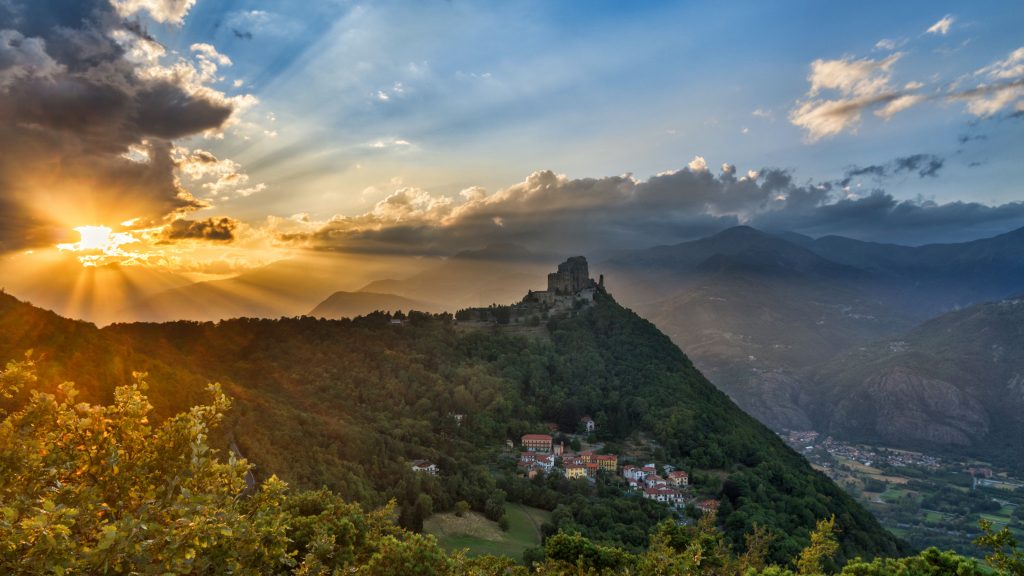
Among the prodigious events that took place were apparitions of Saint Michael on the mountain, reported by one Hugon de Montboissier, governor of Aurec-sur-Loire, who took on the task of continuing the construction of the Abbey for seven years in order to obtain indulgence for his sins from the Pope. He then built a monastic community around the church, which was then entrusted to the Benedictines, who managed the Sacra for about six hundred years and built the guest quarters, of which only a few remnants survive today, reconstructed at the end of the 19th century.
The church is reached via the ‘Staircase of the Dead‘, a 243-step path carved into the rock. The name comes from the fact that until 1936, the niche on the right side displayed the mummified skeletons of a number of monks as a ‘memento mori’, later moved to the ossuary below. Some curious stories are linked to this structure, divided into two ramps with an 18m pillar supporting the church above. In fact, it is said that one day, a man with a thick beard came to the Abbey to ask for refuge, and despite misgivings about his identity, he was accepted. Shortly afterwards, the man died, and some of the monks claimed to have seen his ghost floating in the churchyard.
Another story, thanks to which the staircase also takes the nickname ‘the staircase of the rats’, is linked to the sacristan Bernardino, who went to close the entrance door at the base of the staircase every night. One stormy night, a gust of wind extinguished his torch and slammed the entrance door to the monastery shut. Trying to reach the door in the dark, the sacristan heard the sound of bones on stone and, once he realised he was locked in the staircase, he saw in the light of a lightning bolt a skull skittering over the steps. Seized with terror, he began to scream. It was the abbot who rescued him and, by the light of the torch, lifted the skull, revealing the presence of… a mouse!
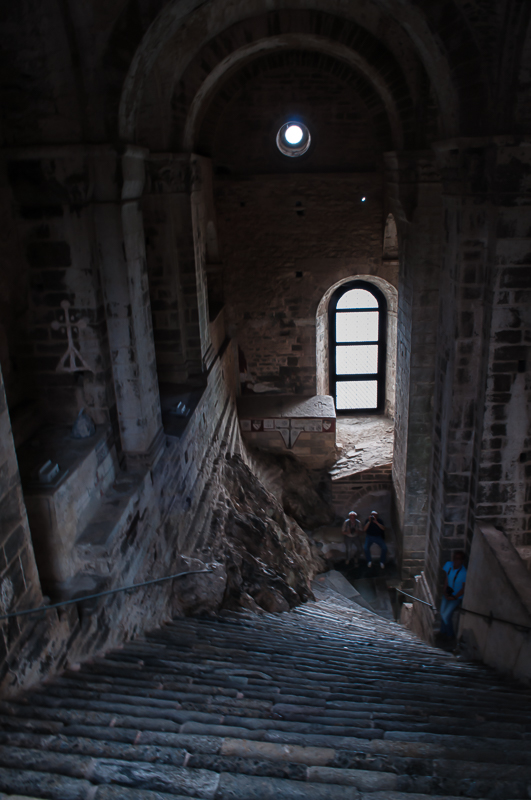
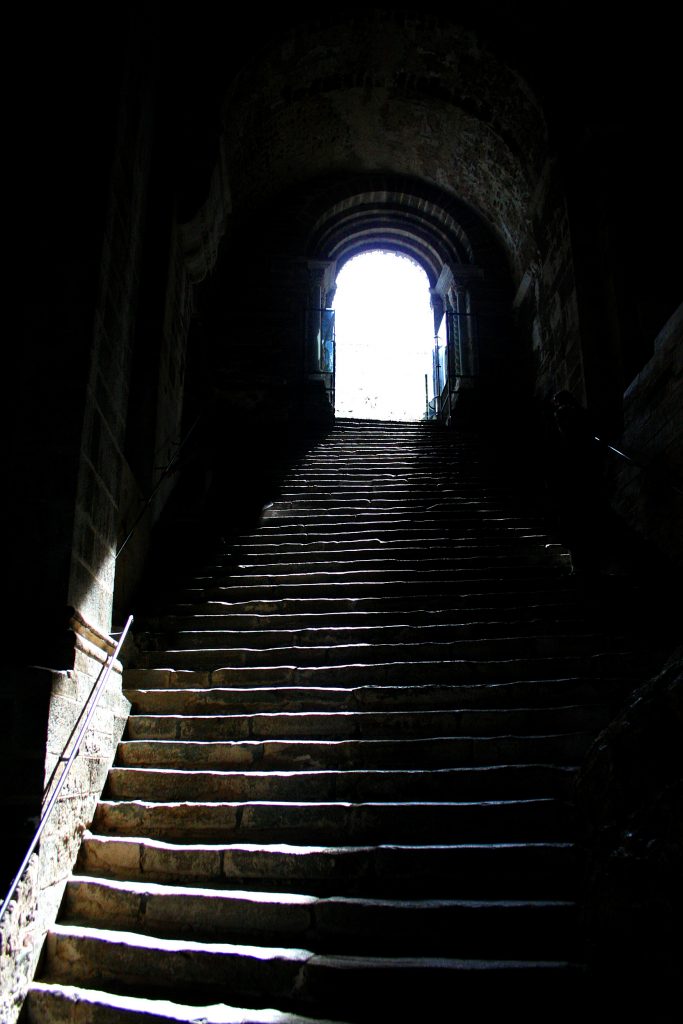
The core of the building is the abbey, to which the New Church and the New Monastery were added over time, and of which the 20-metre-high Tower of Bell’Alda overlooks the precipice. It is said that, between the 13th and 14th century, a young girl named Alda took refuge in this tower to avoid being captured and attacked by soldiers of fortune who had invaded and sacked the abbey. Sensing that she had no escape, she prayed and then threw herself into the void. Her pleas were answered and, thanks to the intervention of the angels, she remained miraculously unharmed. However, after reporting the incident to the villagers, who were divided between those who believed her and those who did not, it is said that the young woman, whether out of vanity and pride or because of a bet for money, decided to jump off the tower again; this time there was no divine help, and she died. The story ends with the popular phrase ‘l tòch pi gròss a l’é l’orija‘: the biggest piece left of her was her ear! A cross at the presumed site where she landed quotes the final verse of a popular song written in her memory: ‘La Bell’Alda insuperbita qui dal balzo si gettò / sfracellata nella valle / la Bell’Alda se ne andò‘.
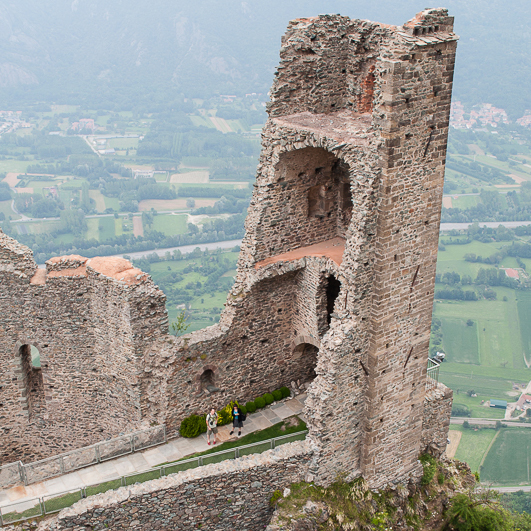
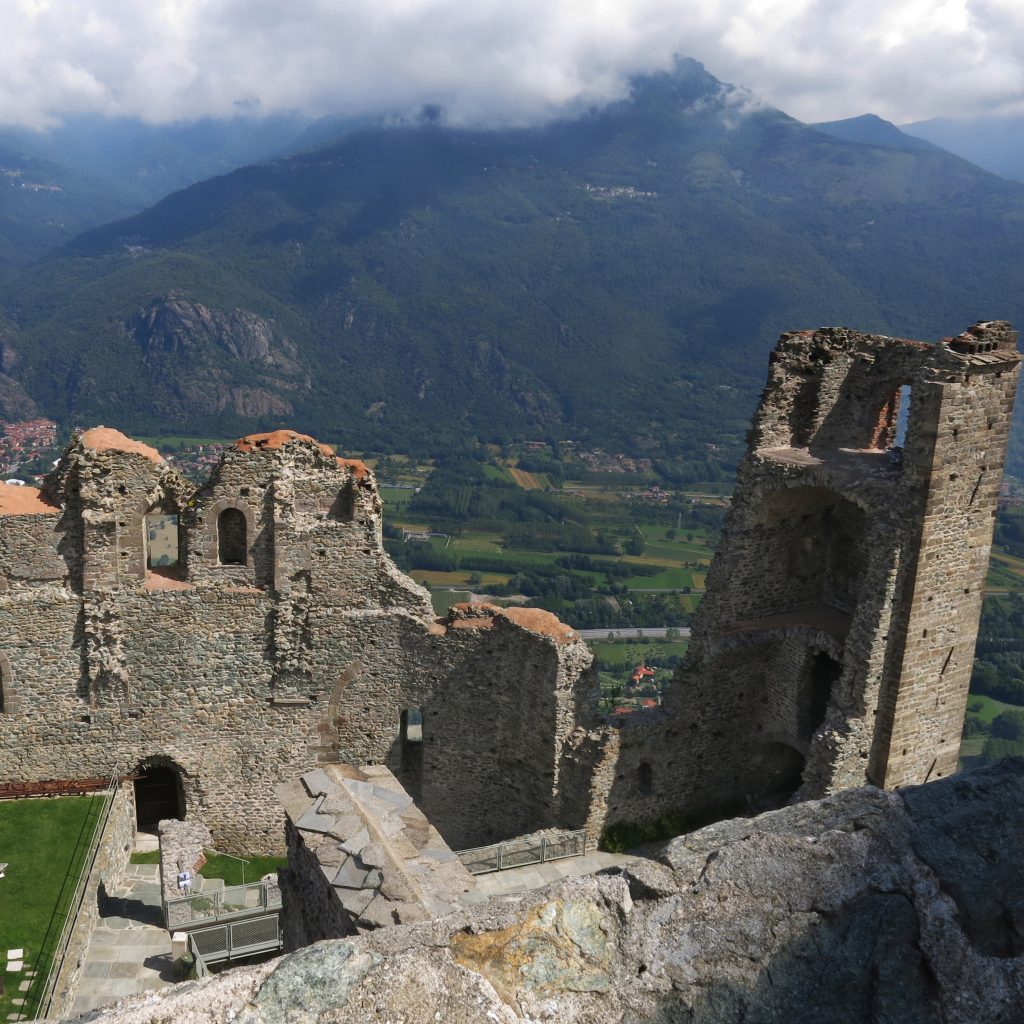
The sacred and ‘magic’ line of the dragon: a connection between the path and the world
The Cottian Alps became part of the Roman Empire in 63 CE, and the place where the abbey stands today was used as a castrum, or military garrison, first by the Romans and then by the Lombards, and probably also by the Templars who settled in the Susa Valley in 1170 CE. It is therefore no coincidence that over the centuries it has become the place of worship of God’s warrior par excellence against the forces of evil, the archangel Michael.
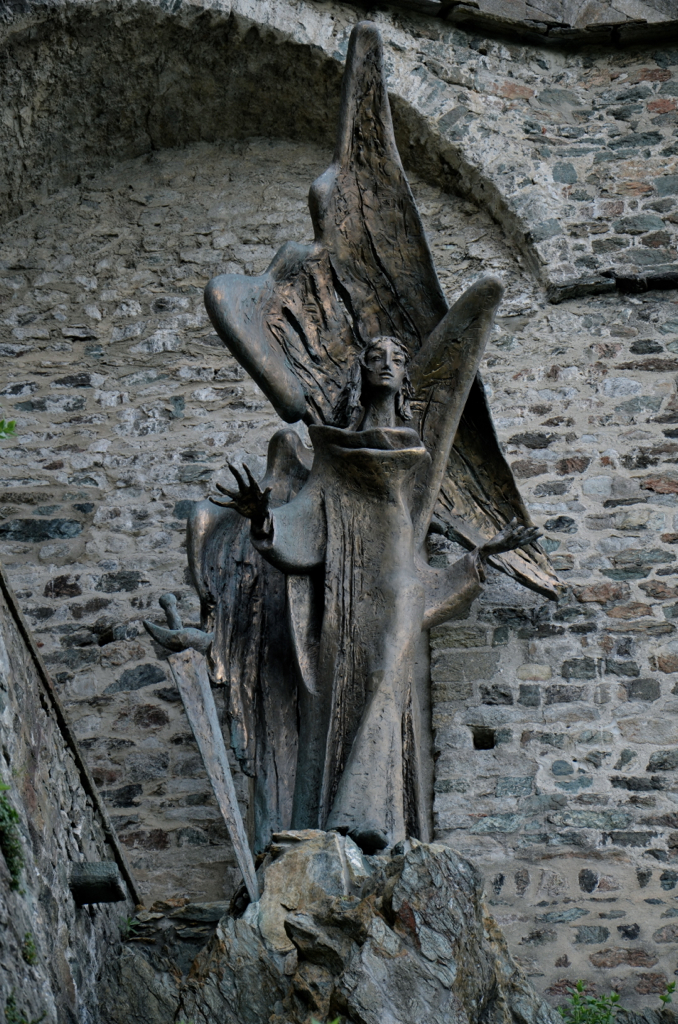
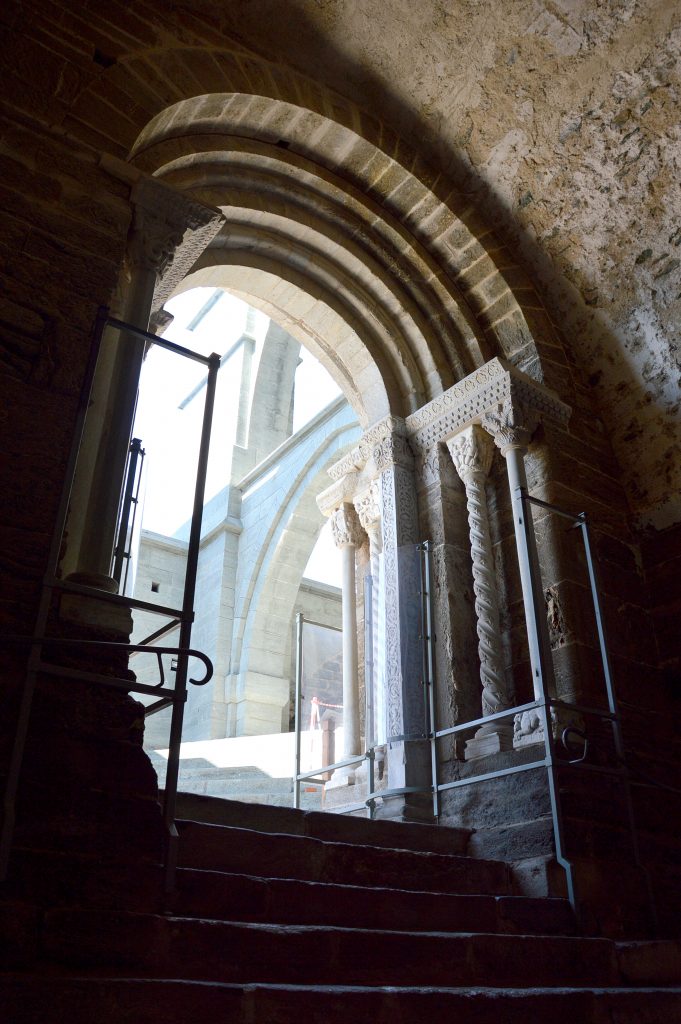
The cult of the angel spread from the East to the West thanks to the Lombards, who saw in the ‘princeps militiae caelestis‘ the gifts of the god Odin, and for whom they erected several places of worship, including the Sanctuary of St. Michael Archangel in the Gargano (Apulia) also located on the Via Francigena. The spread of worship of the angel led, also in the Middle Ages, to the construction of the complex of Mont Saint-Michel in France. As with the Sacra, the angel is said to have appeared to indicate the designated place to build these two churches. Moreover, all three stand at a distance of exactly 1,000 kilometres from each other, in the middle of a 4,000-kilometre long Saint Michael’s line that perfectly connects four other sanctuaries dedicated to the archangel: in Ireland (Skellig Michael), England (St. Michael’s Mount), Greece (St. Michael the Archangel’s monastery in Panormitis on the island of Symy) and Israel (Stella Maris monastery on Mount Carmel in Haifa). Together, the 7 shrines form an alignment that corresponds to the setting of the sun on the day of the summer solstice.
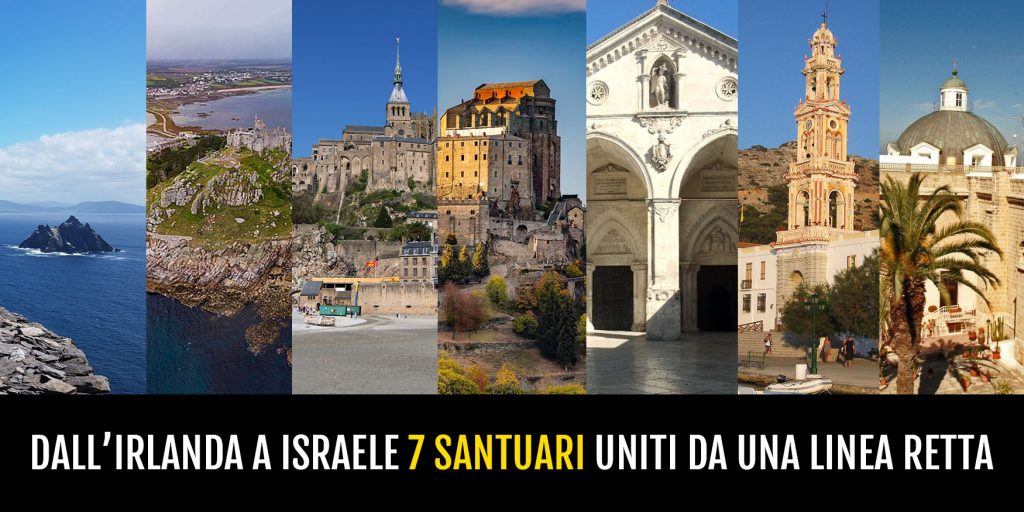
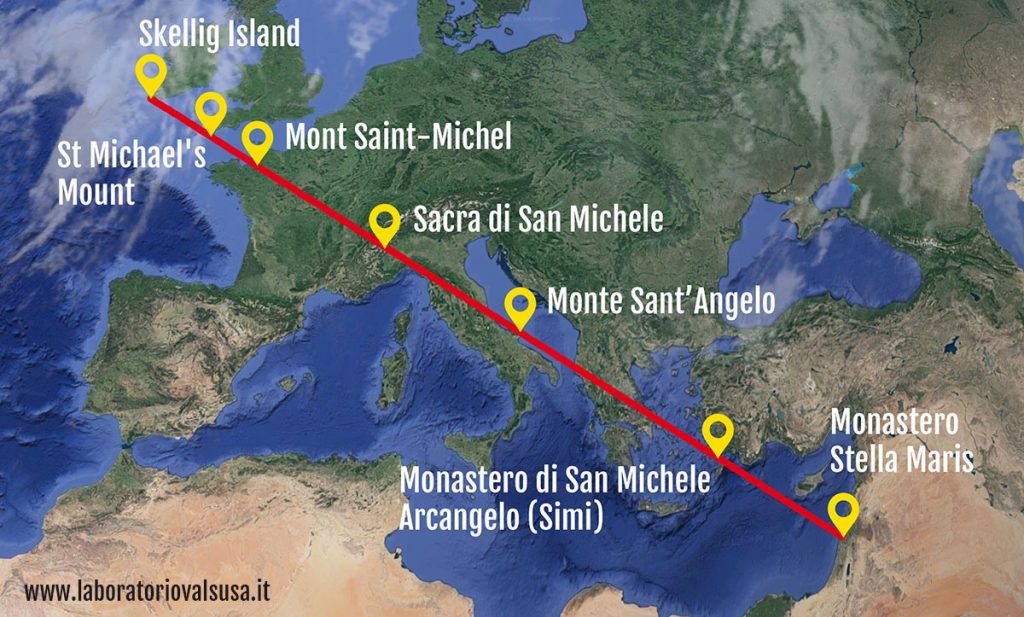
According to the legend, the alignment of the shrines corresponds to the blow of the sword that St. Michael inflicts on the Devil in the Apocalypse. Described in the book of Revelations, his sword leaves an imaginary energy line, and is also referred to as the ‘dragon line’ because Lucifer, in Christianity, is a great serpent or dragon from hell. The aforementioned straight line is a ‘Ley Line’, a term coined by archaeologist Alfred Watkins in 1921 in two of his publications, ‘Early British Trackways’ and ‘The Old Straight Track’, to indicate points of geographical alignment and spiritual interest. In fact, at the points where the ‘Ley Lines’ intersect, energy forces also converge, coming from the centre of the earth. This is why places of worship, erected in different historical eras, are located along these lines. In each of the seven shrines one can therefore find a specific place where positive energy can be perceived. Within the Sacra, the centre of the line, this point is said to be a tile of a lighter colour than the others, positioned to the left, once you cross the threshold of the Church, near a column. Some say it is best not to stand there for more than seven minutes!
Why seven? Because seven is the spiritual number par excellence, referenced not only in Christianity but in other faiths as well, also representing the Chakras, the days of the lunar cycle, the colours of the rainbow, the days of the week, and much more. Could it be a coincidence that inside the Sacra, on the Zodiac Portal which together with the Staircase of the Dead represents the journey of the soul from human life to divine grace, there are seven capitals, all different in workmanship, theme and materials?
If this story intrigues you and you want to learn more about this place, which is a UNESCO World Heritage candidate on the Via Francigena, make sure to visit the website of Visit Piemonte, and set out to visit the Sacra and discover its historical, architectural and mystical value for yourself.
Practical information:
The Sacra di San Michele can be reached from Avigliana by car or road bike. On foot, again from Avigliana, with the Sentiero dei Principi (Princes’ Path) from Mortera and from Sant’Ambrogio, Chiusa di San Michele and Vaie along ancient mule tracks. Or, with the appropriate equipment and accompaniment, by climbing the via ferrata that starts from the car park near Lago dei Camosci in Sant’Ambrogio.






